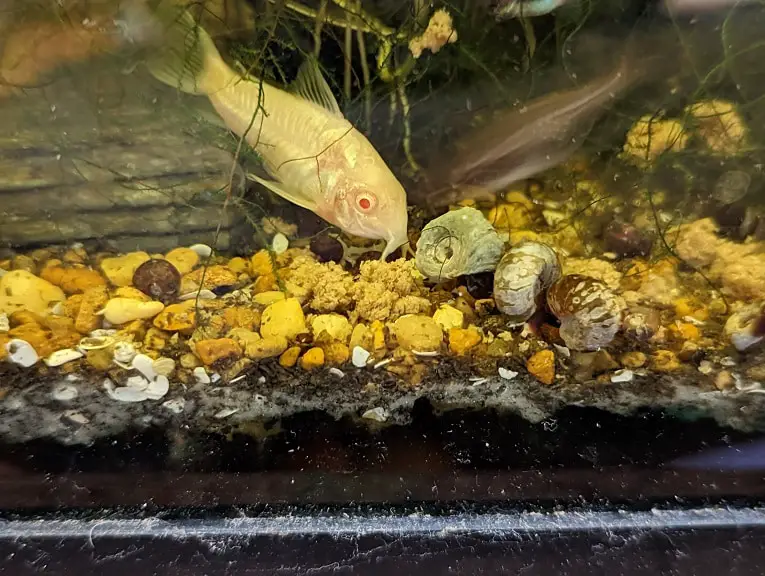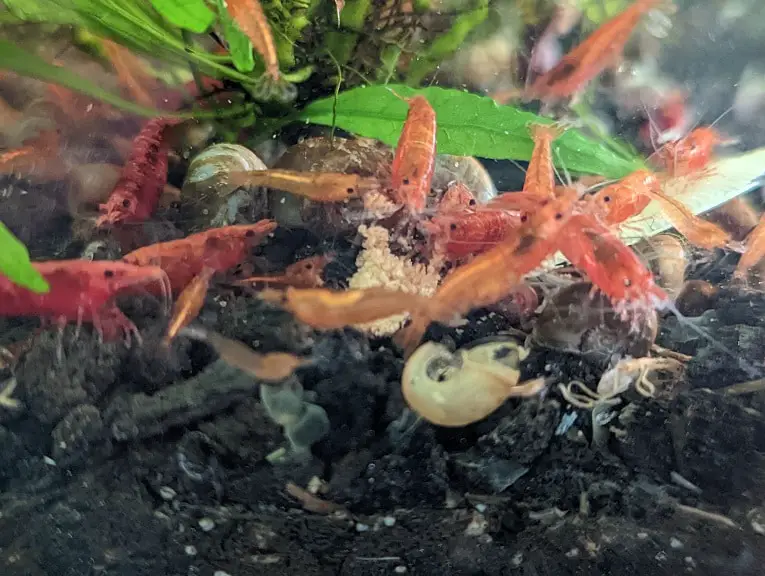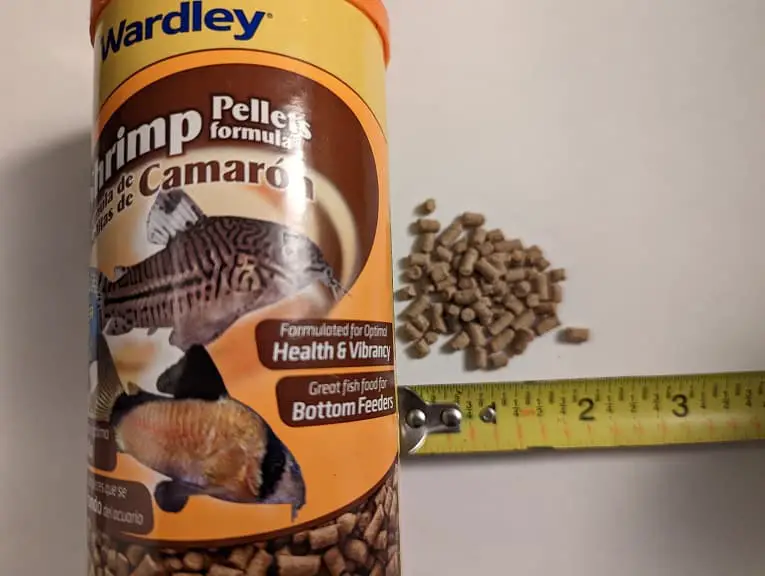If you are looking for a meaty food to feed to the bottom feeders of your fish tank, then you may have found the Wardley Shrimp Pellets. So, is this product any good? You can find out in this review article from Aquarium Blueprints.
Ingredients
The Wardley Shrimp Pellets are made of the following ingredients (the list is ordered from the most prominent components at the top to the least at the bottom):
- Shrimp Meal
- Wheat Middlings
- Fish Meal
- Dehulled Soybean Meal
- Fish Oil
- Lignin Sulfonate
- L-ascorbyl-2-polyphosphate (Vitamin C Source)
- Rice Hulls
- Choline Chloride
- Betaine
- Ethoxyquin (Preservative)
- Vitamin E Supplement
- Calcium Carbonate
- Menadione Sodium Bisulfite Complex (Vitamin K Activity Source)
- Zinc Proteinate
- Zinc Sulfate
- Niacin Supplement
- Biotin
- Calcium Pantothenate
- Mineral Oil
- Thiamine Mononitrate
- Ferrous Sulfate
- Iron Proteinate
- Riboflavin Supplement
- Pyridoxine Hydrochloride
- Manganese Sulfate
- Manganese Proteinate
- Vitamin A Supplement
- Sodium Selenite
- Vitamin B12 Supplement
- Folic Acid
- Copper Sulfate
- Copper Proteinate
- Vitamin D3 Supplement
- Calcium Iodate

Guaranteed Analysis
These shrimp pellets provide a good source for protein as well as Vitamin C. You can check out the nutritional breakdown for this product below:
- Crude Protein: minimum 36%
- Crude Fat: minimum 8%
- Crude Fiber: maximum 6.5%
- Moisture: maximum 11%
- Phosphorus: minimum 1.2%
- Ascorbic Acid (Vitamin C): minimum 400 mg/kg
What fish will eat Wardley Shrimp Pellets?
While the Wardley Shrimp Pellets are mainly made for bottom feeders like Corydoras and Loaches, other fish and other inhabitants should also enjoy the food as well.
We found that your Albino Cory Cats and Kuhli Loaches will immediately swarm over to the food shortly after we drop it into the tank.
Furthermore, our Guppies and White Cloud Mountain Minnows will like to dive down to the bottom to get a piece as well.
Last but not least, our Red Cherry Shrimps and Ramshorn Snails will also pick up any remaining bits and pieces of this food.

Feeding Directions
Wardley recommends that you feed these pellets one or two times a day.
During meal time, feed as much as your fish are willing to eat for 5 minutes. Afterwards, remove any uneaten portions from the tank in order to prevent the food from fouling your aquarium water.
Expiration Date
The “Best By” date of Wardley Shrimp Pellets can be found printed at the bottom of the container.
Pros
What we like most about these pellets is that they will easily sink into the bottom of the tank once you put them in the tank. Therefore, you can easily target a specific feeding location.
Furthermore, the pellets will break apart easily, which is great as the food will be spread out. This will give the other inhabitants in your tank a chance to eat.

Cons
The only real negative we have is that, since the Wardley Shrimp Pellets can drop down to the bottom of your tank and break apart easily, then some of it may end up getting underneath your substrate.
If left uneaten, then the pellets will eventually start to leech ammonia in your tank water.
Thankfully, you shouldn’t have to worry about this if you are using sand or have a substrate that don’t leave a lot of open gaps. You can also drop the pellets on a feeding dish to make it easier to remove any uneaten portions.
Recap
Wardley Shrimp Pellets is a great food for bottom feeders and other inhabitants in your fish tank as it provides plenty of protein and Vitamin C.
The pellets will sink almost immediately and will break apart soon afterwards, spreading all around the bottom of the tank. This will give the bottom feeders and other inhabitants plenty of chances to eat up the pieces if you have a lot of aggressive eaters during meal time.
As long as you are careful with removing any uneaten portions, as well as prevent the food from getting underneath your substrate, then this product shouldn’t cause any water quality issues.
